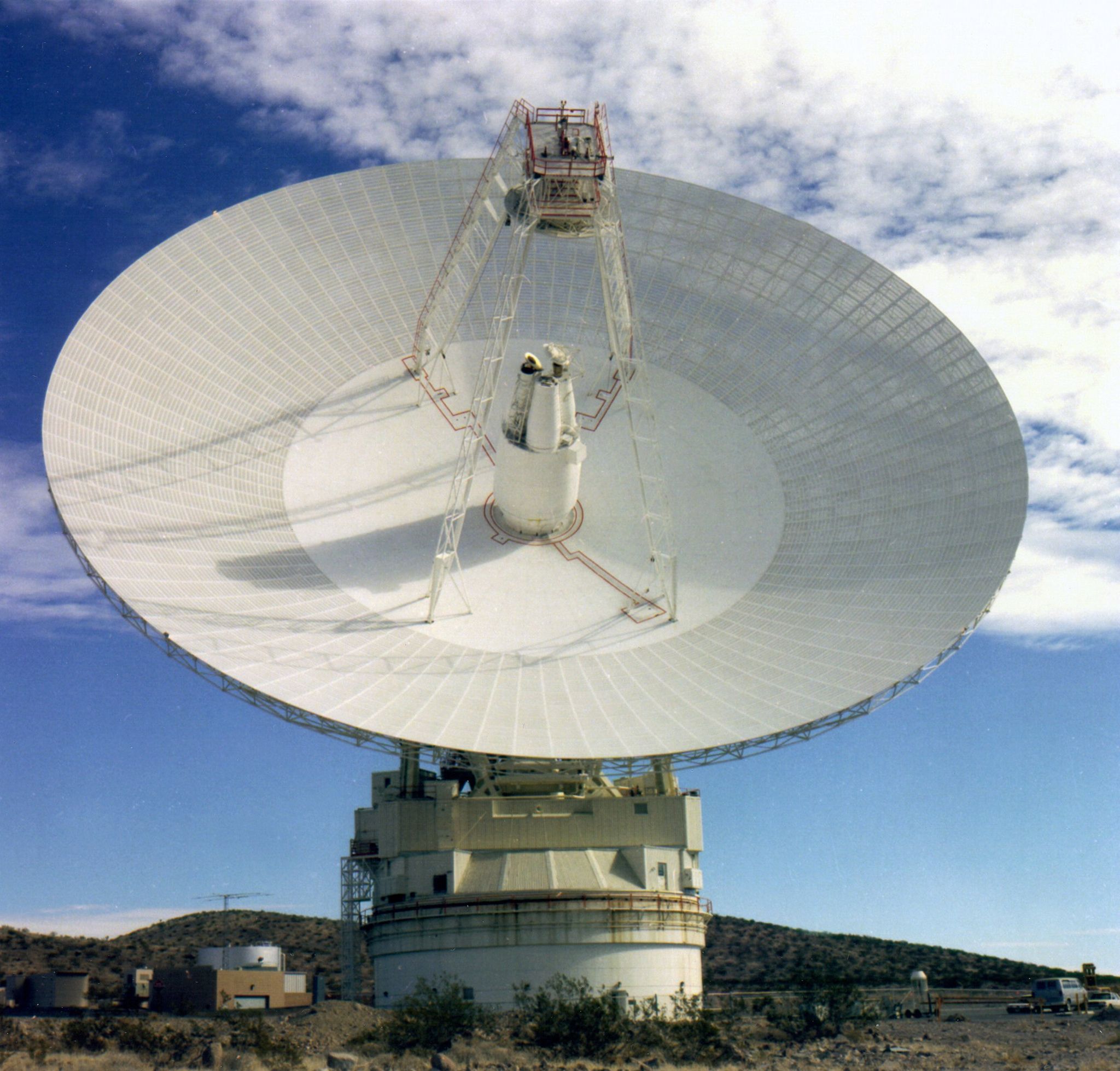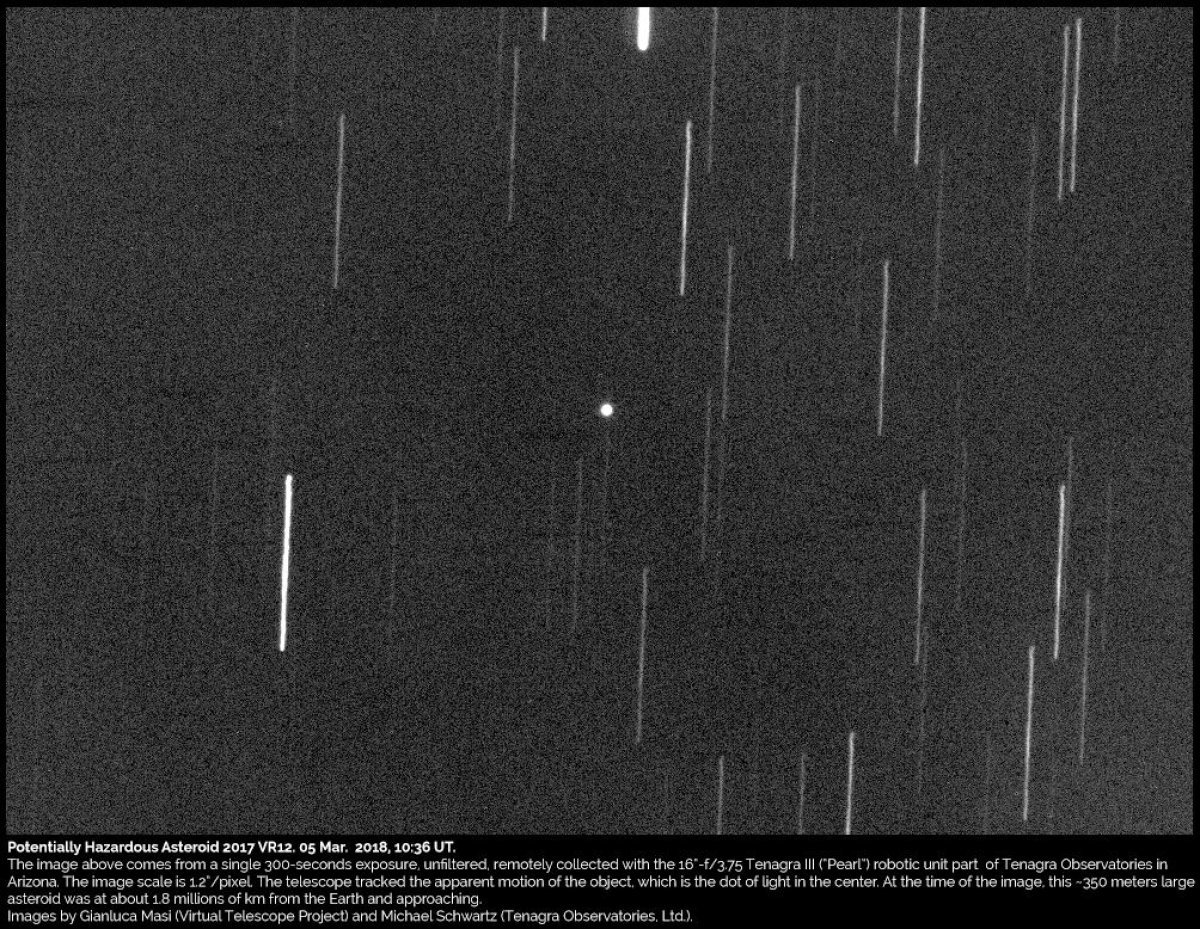
Asteroid 2017 VR12 is due to pass within just 900,000 miles of Earth in the early hours of March 7. According to NASA, the space rock could outstretch the Empire State Building, being somewhere between 700 ft and 1500 ft in diameter.
Its size and close approach to Earth mean 2017 VR12—weather permitting—could be visible through a humble backyard telescope.
'Easily visible' to amateurs with the right equipment
"It will get as bright as about 12 magnitude, easily visible to northern hemisphere amateur astronomers with moderate-sized telescopes—perhaps even as small as six-inch telescopes," Paul Chodas, manager of the Center for Near Earth Object Studies (CNEOS) at NASA's Jet Propulsion Laboratory, previously told Newsweek. "Observers will still need a dark sky and a good ephemeris to find the object, however."
An ephemeris is a precise prediction of where to look in the sky to see the asteroid, based on the time and your location.
Look towards Virgo
EarthSky recommends stargazers in eastern North America look to the skies at about 11:00 p.m. ET March 6. If you're based in the West, look through your telescope after 9.30 p.m. PT. The asteroid is predicted to reach its closest approach to Earth at about 2.53 a.m ET on March 7.
If you have access to a computerized telescope, use star HIP 65106 as a marker at 12:00 a.m. ET. The asteroid is due to pass in front of the constellation Virgo—where HIP 65106 sits—on the night of March 6/7. At this time, it should move slowly in front of the stars.
Just after 4:00 a.m. ET, the asteroid will move through the skies near our view of HIP 65198. Look through your telescope, wait ten minutes, and take another peek to identify the asteroid. EarthSky recommends you cover your head with a dark cloth for a better view. The moon will be relatively bright that night, but it should still be possible to spot the asteroid.
Huge scientific value

Near-Earth objects like 2017 VR12 can be excellent targets for scientific exploration. NASA's Near-Earth Object Human Space Flight Accessible Targets Study (NHATS) has been cataloguing accessible near-earth objects since 2010. It lists 2017 VR12 as a possible target and gives details of potential mission trajectories.
Read more: Amateur Astronomer Tests New Camera, Catches Birth of a Supernova
Although no mission is planned for 2017 VR12, learning more about such objects can help scientists prepare for dangerous incoming asteroids. Scientists could learn about asteroid composition, density, porosity, rotation state and more, Chodas said. "If we ever had to deflect a threatening asteroid, we would need to know physical properties like this, as well as other properties, like the expected internal strength," he added. "We know very little about these topics right now."
In the meantime, the close approach of 2017 VR12 offers a wealth of valuable information for astronomers. "As the asteroid approaches and brightens, ground-based observers will be able to obtain data on its rotational properties, spin rate and pole direction, and its spectral class, which is an indicator of its general composition," Chodas said.
If you want to spot 2017 VR12 but don't have your own telescope, or you don't feel like venturing outside, you can watch the asteroid's progress online. The Virtual Telescope will livestream 2017 VR12's path through the skies with coverage starting at 7:00 p.m. ET March 6.
Uncommon Knowledge
Newsweek is committed to challenging conventional wisdom and finding connections in the search for common ground.
Newsweek is committed to challenging conventional wisdom and finding connections in the search for common ground.
About the writer
Katherine Hignett is a reporter based in London. She currently covers current affairs, health and science. Prior to joining Newsweek ... Read more
To read how Newsweek uses AI as a newsroom tool, Click here.








